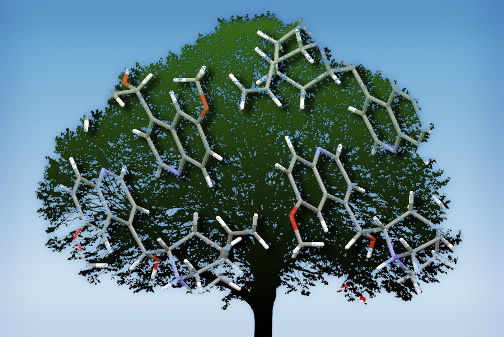To help celebrate Planet Ark's National Tree Day this Sunday we cast an eye over a very useful material that comes trees: Quinine
What is Quinine?
Quinine is a molecule that was first discovered by the Quechua people of Peru who distilled it from the bark of the cinchona tree and used it as a muscle relaxant. The Romans also used it for medicinal purposes. To treat malaria.
When the British were in the East they were susceptible to malaria and soon found out about the medicinal properties of quinine, which is a well-known ingredient in tonic water. Yet they wouldn’t drink it because it was so bitter.
That is when gin was added to the mix. When the British drank the gin and tonic they almost forgot it was medicinal because it was so enjoyable.
One of the interesting properties of quinine is that it fluoresces under UV light, hence can be used to make glow-in the dark jellies.
When the British were in the East they were susceptible to malaria and soon found out about the medicinal properties of quinine, which is a well-known ingredient in tonic water. Yet they wouldn’t drink it because it was so bitter.
That is when gin was added to the mix. When the British drank the gin and tonic they almost forgot it was medicinal because it was so enjoyable.
One of the interesting properties of quinine is that it fluoresces under UV light, hence can be used to make glow-in the dark jellies.
Where did the structure come from?
The structure we’ve featured is actually a quinine sulfate hydrate, as quinine is soluble in water often forms crystals with other smaller molecule, and was determined by Mangwala Kimpende and Van Meervelt.
Author: ANSTO's Helen Maynard-Casely
Learn more about crystallography here.
Learn about a crystal structure a day on Helen's Blog 365 Days of Crystallography.
Published: 25/07/2014


